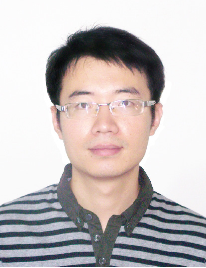Design and development of UO2-Mo composite pellets for accident tolerant fuel by material genome initiative
Cheng Liang*, Yan Biaojie, Gao Rui, Yang Zhenliang, Li Bingqing, Bai bin, Zhang PengCheng*
Institute of Materials, China Academy of Engineering Physics, Jiangyou 621700, China
EXTENDED ABSTRACT: Nuclear power is a clean, low-carbon and high-energy density of strategic energy, which is an important part of modern energy system. In nuclear energy system, nuclear fuel is considered as the cornerstone for nuclear energy development and the "granary" for nuclear energy safety. Performances of nuclear fuel determine the advanced nature, economy and security of nuclear power. After the "311" Fukushima nuclear disaster, Accident Tolerant Fuel (ATF) has become a hot issue to improve the safety of nuclear fuel under severe accident conditions and the economy under normal conditions. Development of ATF is currently considered as a great reform for current nuclear plants during more than 60 years. The UO2-Mo fuel system investigated in this paper is an important candidate fuel in ATF. The mature manufacturing process of such fuel and its relationship between microstructure and performance has not been well mastered.
The research focuses on the methods to improve the thermal property of UO2-Mo fuel by microstructure design. Guided by the idea of material genome, a high-throughput powder metallurgy preparation and characterization method of ceramic fuel are developed, which is suitable for UO2-Mo fuel with Mo dispersion. UO2-Mo fuel with Mo continuous distribution and UO2-Mo-SiCw fuel, and UO2-Mo-Be fuel are fabricated by spark plasma sintering (SPS). The thermal conductivity, coefficient of thermal expansion, modulus of elasticity, hardness and fracture toughness of the fuel are tested under different preparation conditions. The relationship between fuel preparation technology, microstructure and performance is studied systematically, and the sintering densification behavior of fuel is revealed. The interface characteristics of UO2-Mo fuel are characterized by AES and HRTEM. The thermal resistance of UO2-Mo interface is calculated based on the scattering mismatch model (DMM) and acoustic mismatch model (AMM). The residual stress in the UO2-Mo samples are quantitatively investigated by a residual stress neutron diffractometer (RSND) located at the China Mianyang Research Reactor (CMRR). The fabricated UO2-Mo fuel pellets with independent intellectual property rights satisfy the requirements of research reactor assessment.
In this paper, UO2-Mo fuel pellets are investigated for reactor assessment by material genomic method and employed on the developed high-throughput preparation and characterization platform. The crucial of technology fabrication and microstructure regulation, densification behavior, interfacial characteristics and thermal resistance, and residual stress distribution in UO2-Mo fuel were determined. Such results provide the significant data and technical foundation for irradiation assessment and the engineering application. Furthermore, the developed UO2-Mo-X ternary system show excellent thermal conductivity and application prospects, and are expected to be an optimized candidate fuel system as an ATF.

Figure 1. UO2-Mo accident tolerant fuels

Cheng Liang graduated from China Academy of Engineering Physics (CAEP) in 2020 with a doctorate in nuclear fuel cycle and materials engineering. He is now an engineer in the Institute of Materials, CAEP. In recent years, the research work has mainly focused on powder metallurgy of special materials. Around the novel fabrication technology of advanced nuclear fuel, high-performance alloy for XXX, special ceramics and other materials, the corresponding experimental pilot application-oriented experimental research has been carried out, and the key scientific and engineering problems have been solved. More than 20 papers have been published, including 6 SCI top journal papers with IF > 4 published by the first author or corresponding author. More than 20 national invention patents have been applied for, of which 7 are authorized by the first inventor. It has won the honorary titles of "the 5th metallurgical Youth Science and technology award of Sichuan metal society", "TOP 10 scientific and technological innovation of CAEP", "excellent graduate of CAEP".